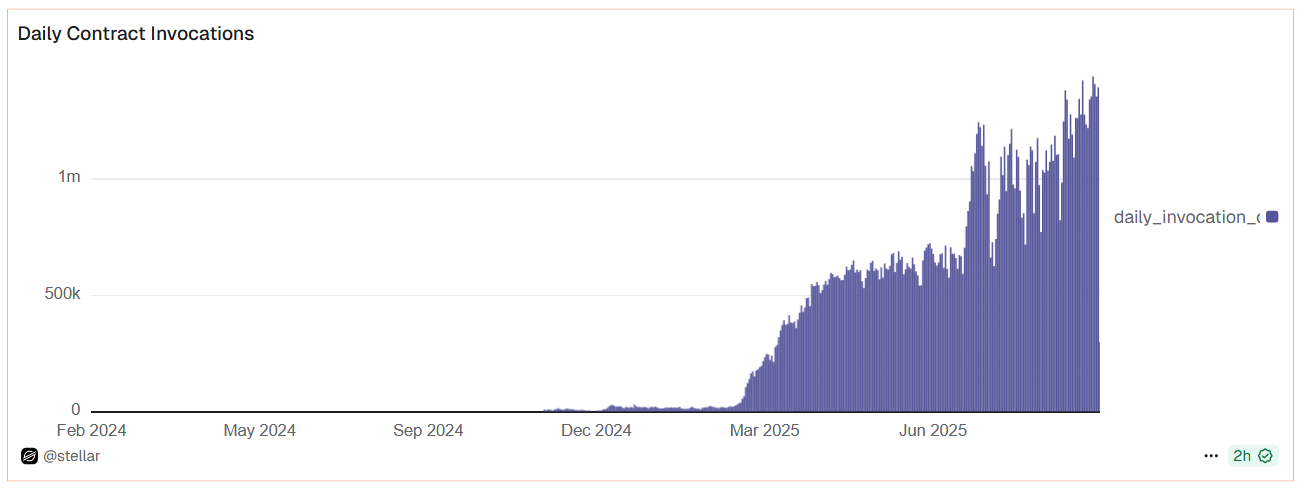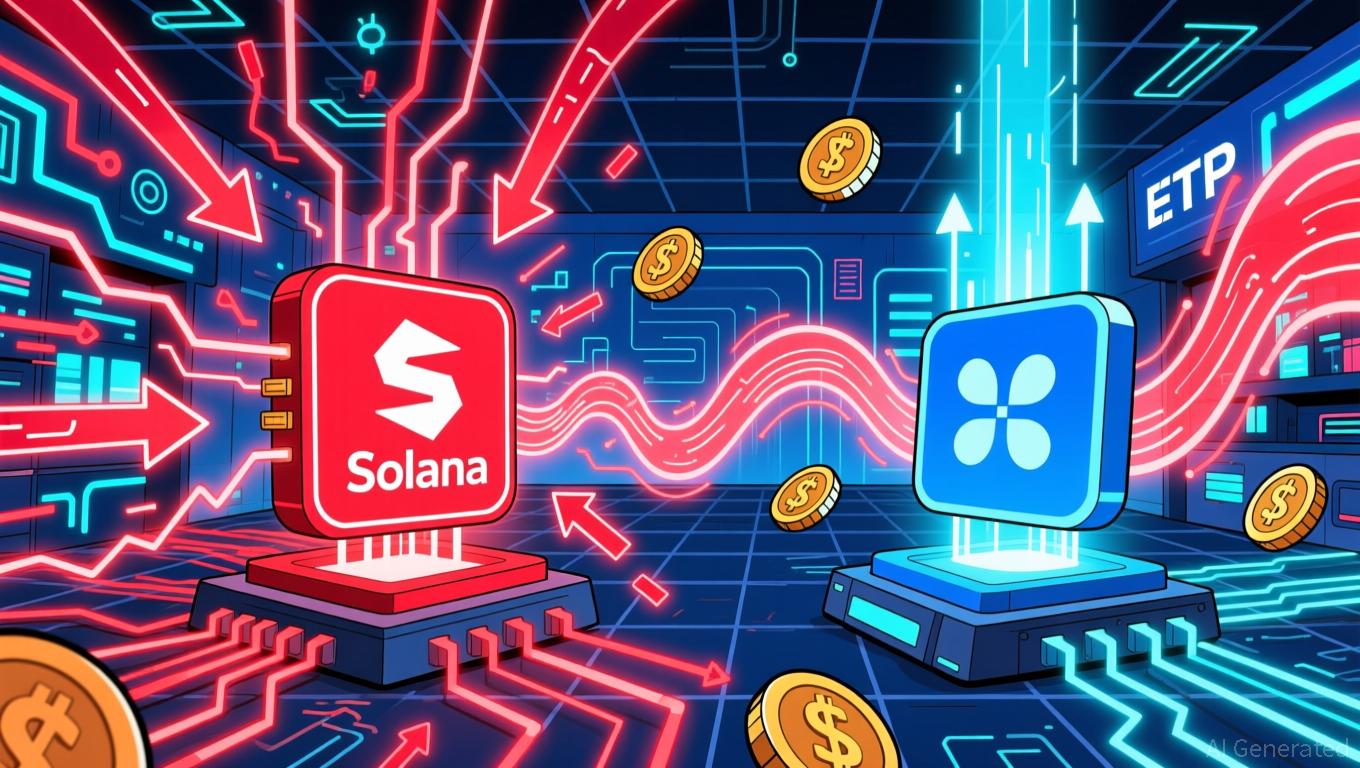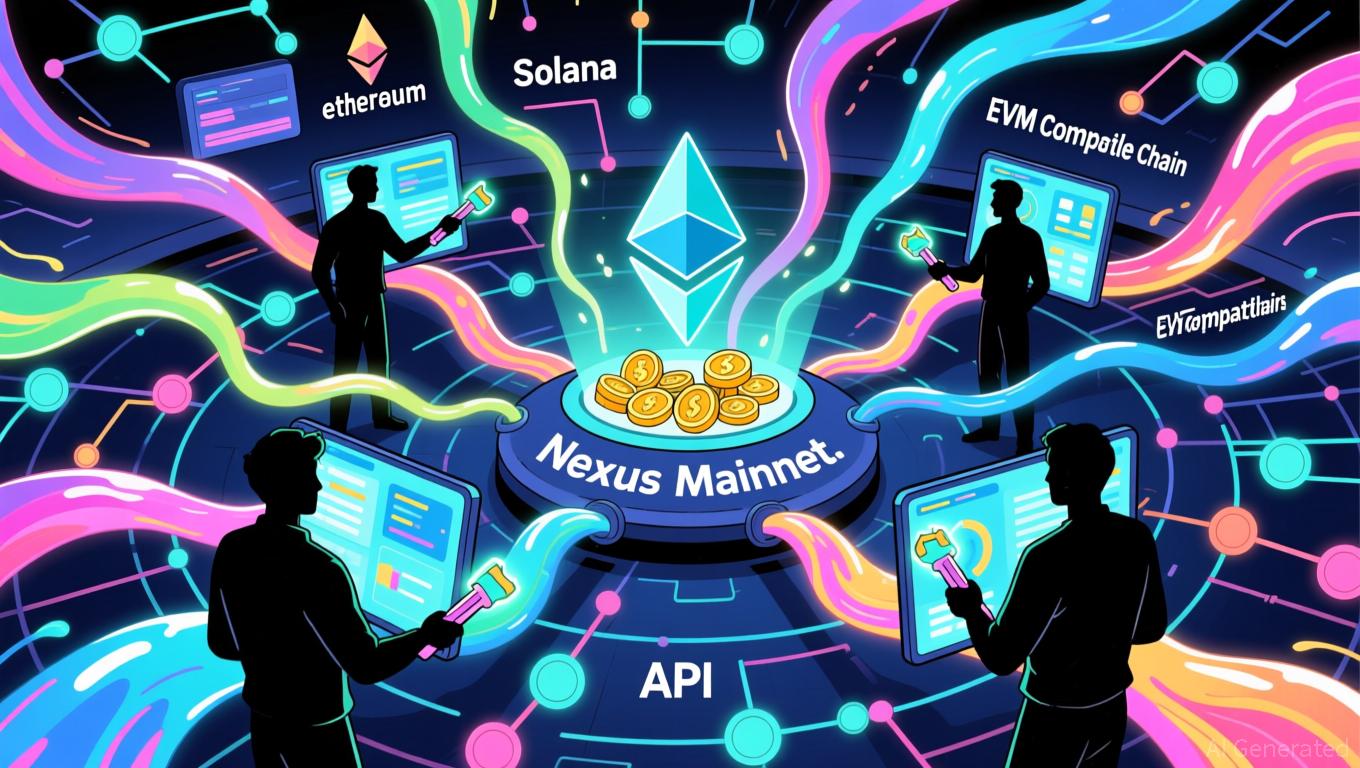3 Positive Signs for the Stellar Network in September Despite Price Decline
Stellar is gaining traction with record TVL, soaring smart contract use, and institutional adoption, signaling strong fundamentals despite XLM’s price pressure.
The Stellar Network, a blockchain platform built for fast and low-cost cross-border payments, shows optimistic signals even as the XLM token recently corrected.
What are these signals, and are they strong enough to withstand the growing selling pressure across the market at the end of September?
Stellar’s Total Value Locked Reaches New High in September
Stellar’s Total Value Locked (TVL) hit a record high in September, with more than 400 million XLM locked in protocols.
Data from DeFiLlama shows that this figure has doubled compared to the previous quarter. The increase reflects the community’s growing confidence in locking XLM within the Stellar ecosystem.
 Stellar’s Total Value Locked. Source:
DefiLlama.
Stellar’s Total Value Locked. Source:
DefiLlama.
TVL calculated in XLM is more reliable than in USD terms. This is because XLM’s USD price fluctuates sharply due to market factors, which can distort the actual picture of assets locked.
In fact, since the beginning of the quarter, XLM’s price has fallen more than 30%, but USD-based TVL has remained stable at around $140 million. The main reason is that the amount of XLM locked in protocols has continued to grow instead of declining.
TVL in XLM focuses on intrinsic value. It accurately measures the assets users commit to staking, lending, or liquidity provision. Leading protocols attracting capital include Blend, Aquarius Stellar, and Stellar DEX.
However, objectively, Stellar’s TVL remains small compared to other ecosystems, where TVL reaches into the billions of USD.
Smart Contract Activity Surged in September
Another highlight for the Stellar network is the sharp increase in smart contract activity.
According to Dune Analytics, smart contract operations surged in September, with more than 1 million daily contract invocations.
This metric measures the average number of successful smart contract calls per day. It helps assess adoption trends and informs decisions on resource allocation and platform development.
 Stellar Daily Contract Invocations. Source:
Dune.
Stellar Daily Contract Invocations. Source:
Dune.
The data shows higher transaction volume, greater creativity, and real-world applications from developers. Examples include contracts related to payments, DeFi, or integrations with traditional financial systems.
This surge carries important implications. It proves that Stellar is moving beyond testing phases into real-world adoption. It also strengthens Stellar’s position as a reliable platform for decentralized financial services, attracting more capital and partnerships.
Institutional Interest in Stellar Grew in September
Alongside positive on-chain data, Stellar also expanded its institutional exposure in September.
Mercado Bitcoin, the largest digital asset investment platform in Latin America, recently announced it would issue $200 million worth of tokenized financial assets (stocks and bonds) on the Stellar network.
RedSwan Digital Real Estate also tokenized $100 million of commercial real estate assets (luxury apartments and hotels) on Stellar’s blockchain.
Furthermore, PayPal officially integrated its stablecoin PYUSD on Stellar, enabling fast and low-cost payments.
Notably, the Hashdex Nasdaq Crypto Index US ETF (ticker: NCIQ) filed with the SEC to include NCIQ. The fund consists of five leading crypto assets: Bitcoin (BTC), Ethereum (ETH), XRP, Solana (SOL), and Stellar (XLM).
This move is promising after the SEC eased listing standards for crypto ETFs and officially approved the multi-asset Grayscale Digital Large Cap Fund (GDLC).

Despite these positive signals, XLM’s price continues to be heavily affected by bearish market sentiment in late September. Once fear-driven trading subsides, Stellar’s strong fundamentals may have the chance to show their value.
Disclaimer: The content of this article solely reflects the author's opinion and does not represent the platform in any capacity. This article is not intended to serve as a reference for making investment decisions.
You may also like
Ethereum News Update: Amundi’s Integrated Approach Connects Blockchain with Conventional Financial Regulations
- Amundi, Europe's largest asset manager, launched its first Ethereum-based tokenized money-market fund, enabling 24/7 settlements and transparent record-keeping via blockchain. - The hybrid model, developed with CACEIS, combines traditional fund operations with blockchain-based ownership, preserving regulatory compliance while expanding investor access. - Ethereum's dominance in stablecoin and RWA transfers ($105.94B in 30 days) underscores its role in accelerating tokenization, with Amundi positioning it

XRP News Today: XRP ETFs Drive Price Increases, While Solana ETFs Ease Selling Pressure
- XRP ETFs raised $587M in inflows since late November, outpacing Solana's $568M as investors favor altcoins with regulatory clarity and utility. - Bitwise XRP ETF's $107M debut and zero-fee strategy drove momentum, while Solana ETFs faced $156M weekly outflows due to network reliability concerns. - XRP's inflows acted as a "battering ram" pushing prices above $2.27, contrasting Solana's ETFs which merely dampened sell pressure without reversing its decline. - Analysts predict XRP could reach $3 by Decembe

The Federal Reserve's Change in Policy and Its Impact on Alternative Cryptocurrencies Such as Solana
- Fed's 2025 policy shifts, including rate cuts and stablecoin regulations, are reshaping altcoin markets by altering liquidity and risk appetite. - Solana's Alpenglow upgrade (150ms finality, 1M TPS) addresses scalability issues, aligning with Fed's AI-driven infrastructure focus despite network reliability concerns. - Institutional inflows into Solana ETFs ($100M AUM) contrast with retail caution (78% HODLers in red), highlighting divergent risk perceptions amid 30% price corrections. - Divergent ETF flo

Avail's Intent-Driven Nexus Addresses the Issue of Fragmented Liquidity Across Chains
- Avail launches Nexus Mainnet, a cross-chain solution unifying liquidity across Ethereum , Solana , and EVM networks. - The intent-solver model enables seamless asset transfers without technical complexities, streamlining user experiences. - Developers gain modular tools for multichain integration, reducing costs as cross-chain liquidity demand grows. - Nexus abstracts execution layers, offering unified balances and execution while addressing fragmentation challenges. - With $50B+ in cross-chain activity

